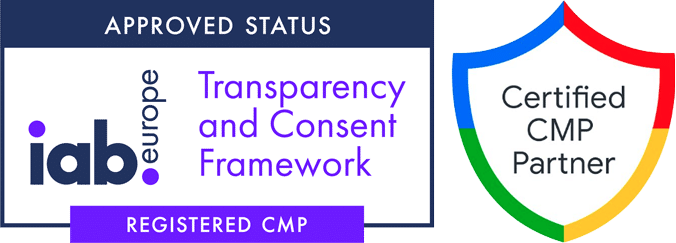What is TCF?
Navigating the Cookie Crumbs: How the Transparency Consent Framework TCF Simplifies Digital Life
Ever found yourself clicking “accept” on a cookie pop-up without a second thought? Well, that simple interaction is part of a much larger and complex system called the Transparency Consent Framework (TCF). This system plays a critical role for website owners, advertisers, and tech providers, helping them comply with European privacy regulations like the GDPR.
Let’s dive into what TCF is and why, if you’re managing a website, you might want to pay attention…
Understanding the Basics of TCF
Why should you care? For starters, managing user consent is not just a regulatory hoop to jump through; it’s crucial for building trust with your audience.
Here’s how TCF comes into play:
1. Consent Management Platforms (CMPs)
Imagine this: You’re at a buffet, and each dish clearly lists its ingredients. That’s what CMPs do on your website. They inform users how their data is being collected and used, making everything transparent and digestible.
Tools like Complianz act as these informative hosts, guiding users through their privacy choices seamlessly.
Using WordPress?
Discover if it’s the right fit for you today →
2. The Who’s Who of TCF
Who’s using this framework? It’s a go-to for publishers, advertisers, and tech providers who want to ensure they’re on the right side of privacy laws.
By following TCF standards, they can openly communicate how they handle personal data, ensuring that user preferences are respected and communicated across various parties.
🆕 Why TCF Matters More Than Ever
With updates and new versions rolling out, like the TCF v2.2 effective since May 2023, there’s always something new to keep up with. These updates are not just bureaucratic changes but significant improvements that enhance user transparency and control.
Here’s what’s new:
- No More Shortcuts on Personalization: Now, consent needs to be explicit; no more relying on the ambiguous “legitimate interest.”
- More Clarity, More Control: CMPs must now show exactly how many third parties are peeking into your data pie. Plus, withdrawing consent has to be as easy as giving it—fair is fair, right?
- Check and Balance: With random audits and enhanced compliance tools, it’s clear that keeping everyone honest is a priority.
Engaging with TCF
Have you ever wondered how these regulations affect your browsing experience? Or how as a website owner, you can better implement these tools?
It’s essential to not only use these systems but to understand the mechanics behind them—ensuring you’re not just compliant, but also aligned with your users’ expectations of privacy and transparency.
Wrapping Up
In the world of digital advertising and data privacy, tools like the TCF aren’t just helpful; they’re necessary for maintaining the delicate balance between effective advertising and respecting user privacy.
Whether you’re a seasoned tech guru or just starting out, staying informed about these changes means you can better navigate the complexities of the digital world.
So, why not take a closer look at how you’re managing consent on your website? Remember, it’s not just about compliance; it’s about commitment to your users’ privacy. How are you stepping up to the challenge?
Take action today, explore our resources on TCF →

